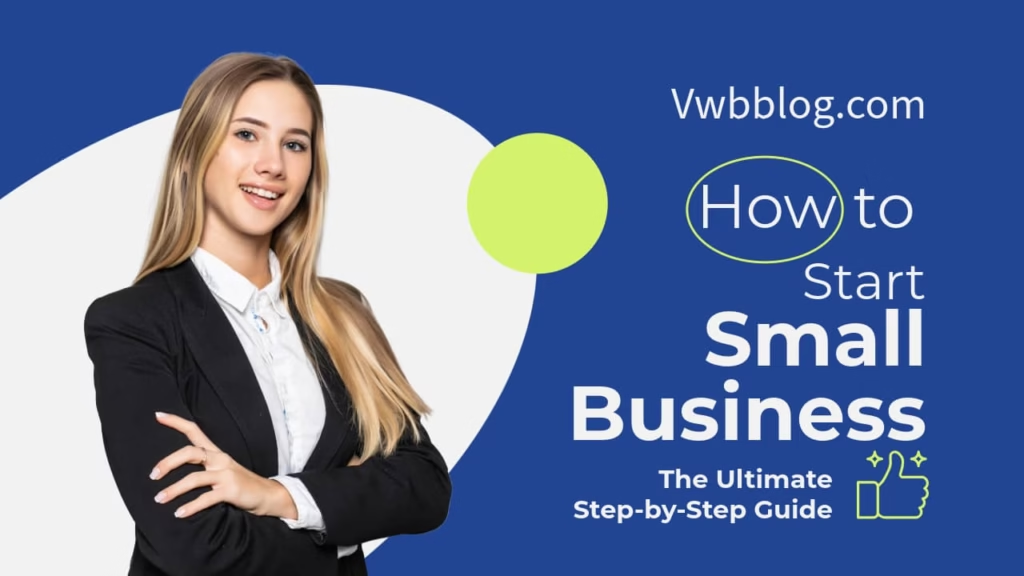Starting a small business can be overwhelming, but with the right roadmap, you can launch successfully—even with limited funds.
This guide covers every step, from idea validation to legal setup, funding, and growth strategies.
Highlights
✅ Start small, validate fast, then scale.
✅ Protect yourself with the right legal structure (LLC recommended).
✅ Track every dollar—use accounting software from Day 1.
✅ Marketing > Perfection. Launch fast, improve later.
Step 1: Validate Your Business Idea
Before investing time and money, ensure your idea has real demand.
✅ Market Research:
- Use Google Trends to check interest over time.
- Search Reddit, Quora, and Facebook Groups to see what people ask about.
- Analyze competitors with SEMrush or Ubersuggest.
✅ Test Your Idea Cheaply:
- Sell pre-orders (via Kickstarter or a simple landing page).
- Run a low-cost Facebook Ad to gauge interest.
Step 2: Choose a Business Structure
Your legal structure affects taxes, liability, and paperwork.
| Structure | Best For | Pros & Cons |
|---|---|---|
| Sole Proprietorship | Solo founders, low-risk businesses | ✅ Easy & cheap ❌ No liability protection |
| LLC (Limited Liability Company) | Most small businesses | ✅ Personal asset protection ❌ Slightly more paperwork |
| Corporation (S-Corp/C-Corp) | Startups seeking investors | ✅ Easier to raise funds ❌ Complex taxes & compliance |
💡 Recommendation: Most small businesses start as an LLC (balances simplicity & protection).

Step 3: Register Your Business & Get Licenses
🚀 Key Steps:
- Pick a Business Name (check availability via your state’s business registry).
- Register with Your State (costs $50-$300, depending on location).
- Get an EIN (Employer Identification Number) (free from the IRS).
- Check Local Licenses (some cities require permits even for home-based businesses).
🔗 Helpful Resources:
Step 4: Set Up Finances & Funding
💰 Funding Options:
- Bootstrapping (using personal savings)
- Small Business Loans (SBA loans, banks, or credit unions)
- Grants (check Grants.gov or local programs)
- Investors (angel investors, venture capital if scaling fast)
📊 Must-Have Financial Tools:
- Business Bank Account (separate from personal funds)
- Accounting Software (QuickBooks, FreshBooks, or Wave)
- Payment Processor (Square, Stripe, or PayPal)
Step 5: Build Your Brand & Online Presence
🌐 Website & Hosting:
- Use Wix, Shopify, or WordPress for easy setup.
- Buy a domain name (Namecheap or Google Domains).
📢 Marketing Basics:
- Social Media (Pick 1-2 platforms where your audience hangs out).
- Email List (Start with Mailchimp or ConvertKit).
- SEO (Optimize for keywords like “best [product] for [audience]”).
Step 6: Launch & Grow Your Business
🚀 Launch Strategy:
- Offer a limited-time discount to first customers.
- Get reviews/testimonials (ask friends/family to support early).
📈 Scaling Tips:
- Outsource tasks (Upwork, Fiverr for admin/marketing).
- Retarget ads to past visitors (Facebook/Google Ads).
- Upsell/cross-sell (e.g., “Customers also bought…”).
Final Checklist Before Launch
✔️ Legal structure filed
✔️ Business bank account opened
✔️ Basic website + social media set up
✔️ First marketing campaign ready
✔️ At least 3 months of runway (emergency funds)
Need more help? Check out our guide on How to Write a Business Plan or Best Tools for Small Businesses.
Next Steps
- Pick a business idea (if you haven’t yet).
- Register your LLC (takes <1 hour).
- Start marketing before launch (build an email list).
Would you like a free business plan template or a funding options deep dive?
Let me know! 🚀

With over 5 years of experience, Minnie J. McGuire covers sports news, offering sharp insights on games, teams, and athletes.


